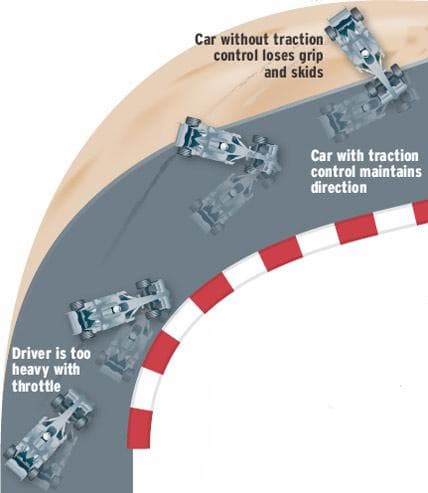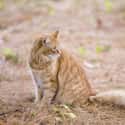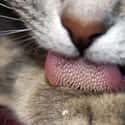-
(#14) The Number Of Rings On A Cow's Horns Show Its Age
If anyone has ever wondered if cows are similar to trees, the answer is yes. The rings on a cow's horns show its age just like the rings in a tree trunk. Of course, cows are more active than trees, so their rings eventually start to fade.
But if you ever want to know a cow's approximate age, take a close look at its horns -- just not too close.
-
(#4) Almost 10 Percent Of Cat Bones Are In Their Tails
Cats use their tails to share their mood and to land on their feet when they jump (or fall) from that bookcase you keep telling them not to climb. Their tails aren’t just handy tools to keep their humans from hyperventilating. Cats’ tails are complex anatomical structures that keep them balanced – so complex, in fact, that they house ten percent of a feline’s bones.
With about 20 vertebrae in their tails alone (give or take depending on their breeds), it’s no wonder cats express their feelings through their most complicated appendages!
-
(#20) Cat Tongues Are Covered in Barbs
Imagine barbed wire. Now imagine a fleshy version of that on your cat’s tongue (along with the sandpaper sensation of being licked by said cat). Those barbs are called papillae, and they serve as itty bitty kitty hooks. When cats groom themselves, the papillae hook onto loose fur and dirt, leaving their coats extra clean.
Since these barbs face backwards, cats usually swallow anything their tongues scoop up, leading to not-so-clean looking hairballs.
-
(#9) Horned Lizards Can Squirt Toxic Blood From Their Eyes
When it comes to defense mechanisms, horned lizards win all the points. They defend themselves in three ways, depending on what wants to eat them at any given moment, and the final line of defense is truly insane.
The horned lizard's first defense mechanism is its camouflage. It's hard to notice these cold-blooded critters in their natural habitat, and if they are spotted, their spiky appearance makes them seem formidable. If the 'you can't see me' approach doesn't work, horned lizards freak out predators by puffing their bodies up to twice their normal size, flipping onto their backs, and acting totally loco.
If the first two off-putting strategies don't work, it's time to call in the big guns and use the craziest defense tactic in existence. Typically saved for dogs, cats, and coyotes, horned lizards can scare off their enemies by squirting toxic blood from their eyes.
Yes, you read that right. Horned lizards can control the force of blood pressure within their heads and let it build up around their eyes. When the pressure is strong enough, they shoot the blood up to five feet, and can even control the direction in which it goes. They can repeat this several times, but once is usually enough to do the trick. As if a lizard squirting blood from its frickin' eyeballs weren't scary enough, the blood tastes disgusting to cats and dogs.
-
(#5) Female Hyenas Have Pseudo-Penises
In a bizarre trick of evolution (or lack thereof), female hyenas have super masculine genitals. What looks like a penis (often referred to as a "pseudo-penis") is actually an extremely large clitoris that hangs down approximately seven inches.
As the dominant hyena sex, females have no problem attacking would-be-suitors. If a male wants to be intimate, he has to show his submission. If the female doesn't attack him right away, there's still have the obstacle of basically trying to squeeze a penis into a penis.
If mating is successful, female hyenas have to go through the pain of birth -- the only thing more painful and awkward than mating. While trying to squeeze a baby hyena out of a one inch tube, everyone involved is in danger. First time hyena mothers often bleed to death. If the mother survives, she still has to face the death of most of her offspring who suffocate on the long, narrow road.
When put into context, it's not hard to see why female hyenas are the alpha gender!
-
(#17) Lizards Can Willingly Detach Their Tails
In a trippy form of body modification, lizards can detach their tails at will. If they feel like they're in danger, lizards drop their tails and make a run for it. Predators let them get away because they're distracted by the tail that keep wiggling long after the rest of the spinal column has fled. Lizards's tails eventually grow back, but not usually in the same color.
So if you see an orange lizard with a green tail (or vice versa), your eyes aren't playing tricks on you -- the self-mutilating lizard is.
New Random Displays Display All By Ranking
About This Tool
Fish, reptiles, birds, amphibians, mammals, and other vertebrates are the main objects of animal anatomy. They are supported by the skeletal system inside the body just like humans. The structure of vertebrates is complex and precise and is very similar to human features. Anatomy is the most direct way to understand animal structure.
When we have a good understanding of the anatomical structure of animals, we can get a good understanding of the differences in different animals without being deceived by appearance. There is an interesting collection. The random tool displays 20 weird anatomical features of common animals in daily life.
Our data comes from Ranker, If you want to participate in the ranking of items displayed on this page, please click here.
















